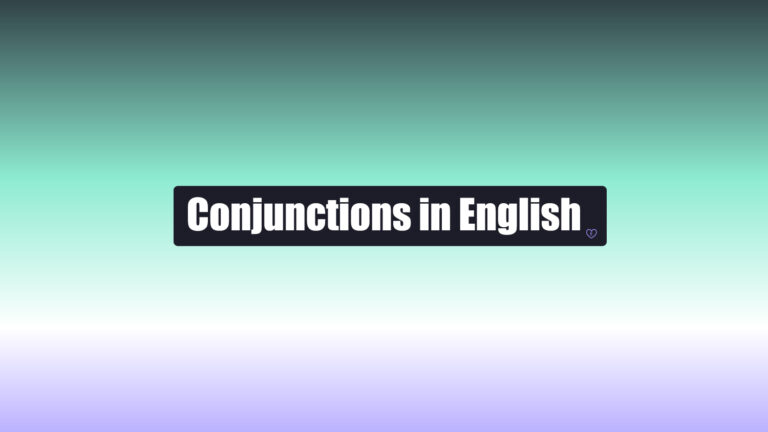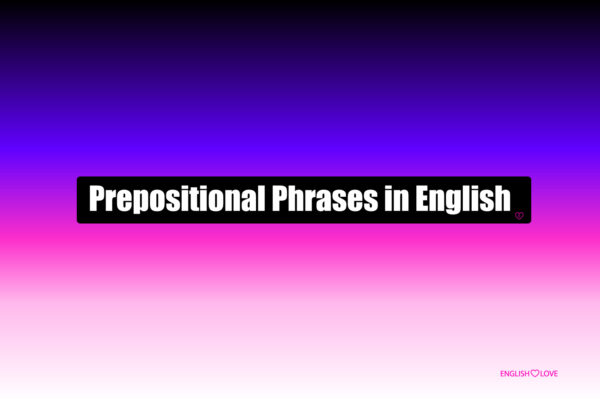Conjunctions play a pivotal role in the English language, often going unnoticed as we seamlessly weave them into our daily conversations. They serve as the glue that binds our thoughts, making our communication coherent and engaging.
- What are Conjunctions?
- Types of Conjunctions
- Conjunction Usage and Common Mistakes
- Conjunctions List
- Conclusion
- FAQ about Conjunctions
- What role do conjunctions play in enhancing sentence structure?
- Are there any conjunctions that can be used interchangeably without altering the meaning of a sentence?
- How can one differentiate between coordinating and subordinating conjunctions?
- Is it considered grammatically incorrect to start a sentence with a conjunction?
What are Conjunctions?
Conjunctions, often referred to as “joining words,” are fundamental components of the English language that bridge gaps and create coherence in our sentences. They serve as connectors, allowing us to link words, phrases, and clauses in a manner that flows naturally and makes sense to the listener or reader.
Function and Importance: At their core, conjunctions are about relationships. They allow us to express complex ideas, combining separate pieces of information into a cohesive whole. Whether we’re showing contrast, giving reasons, indicating time, or listing items, conjunctions are the tools we use to make our meaning clear.
Categories: While conjunctions might seem simple at first glance, they come in different types, each serving a unique purpose:
- Additive Conjunctions: These add one piece of information to another. Examples include “and” and “also.”
- Adversative Conjunctions: Used to show contrast or conflict between two pieces of information. Examples are “but,” “yet,” and “however.”
- Causal Conjunctions: These indicate a reason or cause. “Because,” “since,” and “so” are common causal conjunctions.
- Temporal Conjunctions: They relate information to time, such as “before,” “after,” “while,” and “when.”
Types of Conjunctions
- Coordinating Conjunctions: These conjunctions connect two independent clauses. The acronym FANBOYS can help you remember them: For, And, Nor, But, Or, Yet, So. For instance, “I wanted to watch a movie, but it was raining.”
- Subordinating Conjunctions: These conjunctions connect a dependent clause to an independent one. Examples include although, because, if, and when. For example, “I stayed indoors because it was raining.”
- Paired Conjunctions: Also known as correlative conjunction pairs, these conjunctions connect two independent clauses to establish a relationship. Common pairs include either/or, neither/nor, and both/and. For instance, “I can either read a book or watch a movie.”
| Type | Description | Examples |
|---|---|---|
| Coordinating Conjunctions | Connect two independent clauses. | For, And, Nor, But, Or, Yet, So |
| Subordinating Conjunctions | Connect a dependent clause to an independent one. Used to establish comparisons, cause/effect relationships, etc. | Although, Because, If, When, While, Since, Unless, Until |
| Paired Conjunctions | Also known as correlative conjunction pairs, they establish relationships between two independent clauses. | Either/Or, Neither/Nor, Both/And, Not only/But also, Whether/Or, No sooner/Than, The more/The more |
Conjunction Usage and Common Mistakes
When using conjunctions, it’s crucial to understand punctuation rules. For coordinating conjunctions, a comma is typically required. For subordinating conjunctions, a comma isn’t always necessary. Paired conjunctions, on the other hand, demand commas for correct punctuation.
It’s also essential to avoid common mistakes, such as using multiple conjunctions to join clauses or starting sentences with conjunctions without proper punctuation.
- Using Multiple Conjunctions:
- Incorrect: I wanted to go to the park, but however it was raining.
- Correct: I wanted to go to the park, but it was raining.
- Starting Sentences with Conjunctions Without Proper Punctuation:
- Incorrect: But it was raining.
- Correct: However, it was raining.
- Misusing “Unless” and “Until”:
- Incorrect: I will go to the park unless it doesn’t rain.
- Correct: I will go to the park unless it rains.
- Confusing “Than” with “Then”:
- Incorrect: I would rather have tea then coffee.
- Correct: I would rather have tea than coffee.
- Incorrect Order with Paired Conjunctions:
- Incorrect: I like not only apples but also oranges.
- Correct: Not only do I like apples, but I also like oranges.
- Overusing Conjunctions in a Sentence:
- Incorrect: I wanted to go to the park, but it was raining, so I decided to stay home, and I watched a movie.
- Correct: I wanted to go to the park, but it was raining, so I stayed home and watched a movie.
- Using “But” and “However” Redundantly:
- Incorrect: She was tired, but however, she finished her work.
- Correct: She was tired, but she finished her work.
Conjunctions List
Conjunctions are versatile tools in the English language, allowing us to connect words, phrases, and clauses. Here’s a comprehensive list of conjunctions categorized by their primary functions:
- Coordinating Conjunctions (FANBOYS):
- For: Used to explain reasons or purposes.
- And: Adds one statement to another.
- Nor: Presents a negative alternative to a previous negative item.
- But: Introduces a contrast.
- Or: Presents an alternative or a choice.
- Yet: Introduces a contrast or exception.
- So: Indicates a result or consequence.
- Subordinating Conjunctions:
- Cause and Effect: Because, Since, So that
- Time: After, Before, Once, Until, When, While
- Condition: If, Unless, Even if
- Contrast/Concession: Although, Though, Whereas, While
- Place: Where, Wherever
- Manner: As if, As though
- Purpose: In order that, Lest
- Paired or Correlative Conjunctions:
- Either… Or: Presents two alternatives.
- Neither… Nor: Presents two negative alternatives.
- Both… And: Emphasizes two positive factors.
- Not only… But also: Emphasizes an additional or unexpected item.
- Whether… Or: Presents two alternatives (often used in indirect questions).
- No sooner… Than: Indicates one action that follows another quickly.
- The more… The more: Shows a parallel increase in two factors.
- Other Common Conjunctions:
- However, Moreover, Nevertheless, Still, Therefore, Thus
Conclusion
Conjunctions are indispensable in the English language, enabling us to craft complex sentences and express intricate ideas. By understanding the different types of conjunctions and their proper usage, you can enhance your communication skills and sound more fluent in your conversations.
FAQ about Conjunctions
What role do conjunctions play in enhancing sentence structure?
Conjunctions act as connectors in sentences, allowing for smoother transitions between ideas. They can combine simple sentences into more complex ones, making the content richer and more nuanced.
Are there any conjunctions that can be used interchangeably without altering the meaning of a sentence?
While some conjunctions might seem similar, they often have subtle differences in meaning or usage. For instance, although and though can often be used interchangeably, but and and serve different purposes and cannot replace each other without changing the sentences meaning.
How can one differentiate between coordinating and subordinating conjunctions?
Coordinating conjunctions connect two independent clauses of equal importance, while subordinating conjunctions link a dependent clause to an independent one, indicating that one clause is more significant or primary compared to the other.
Is it considered grammatically incorrect to start a sentence with a conjunction?
Traditionally, starting a sentence with a conjunction was discouraged. However, in modern English, especially in informal writing and conversational contexts, its acceptable to start a sentence with a conjunction for emphasis or stylistic reasons. Its essential, though, to ensure that the overall sentence structure remains clear and coherent.




